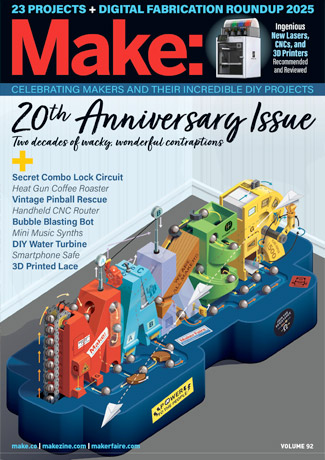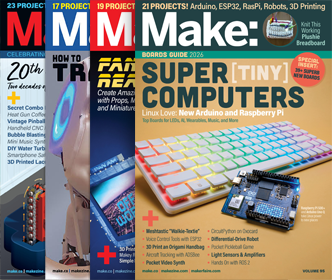
Tips of the Week is our weekly peek at some of the best making tips, tricks, and recommendations we’ve discovered in our travels. Check in every Friday to see what we’ve discovered. And we want to hear from you. Please share your tips, shortcuts, best practices, and tall shop tales in the comments below and we might use your tip in a future column.
Score and Break Styrofoam

Clamp as Caulking Gun

Managing Project Complexity: Break it Down
I was reading this piece on electronics rapid prototyping tips this week. One of the tips struck a chord: “The goal of a rapid prototyping model is to test how different variables impact its performance. You may find that there are lots of variables to test. If so, be careful about trying to combine them all on one breadboard. For more complex models, it can be a good idea to break them into separate builds that isolate complex systems from one another. Later on you can combine them to more closely simulate the final product. The whole point of the rapid prototyping approach is to learn fast. Simple systems that are strung together are usually better for this than highly integrated, complex ones.” This was one of the things I tried to stress in my robot building book. Robots and robotic subsystems, all taken together, can make robotics seem technically overwhelming when it shouldn’t be. In my book I tried to get the reader to focus on each simpler subsystem, gain basic mastery of them, and then worry about how they all work in concert to create a robot. It’s always easiest if you can manage simple systems first, get them reliably working, and then combine them to create a more complex system.
Don’t Try This at Home?

Gordon Freeman: That is really a bad idea. Every time you apply the brush, you pick up contaminants, then when you dip the brush in the paint can, some contaminants get in the paint, then when you run the brush over that rung, it puts even more contaminants into your pant can. A better way is to pour your paint into a container, never pour that paint back into the can, so just pour enough to do the job, and throw away any extra. NEVER put it back in the can. Also, when you wipe the paint off the lip of the can, don’t put that in the can, put that in your paint bucket, or on whatever you are painting. Keep your paint contaminant-free and you will always get better results.
I still think it’s a useful little trick, just don’t do it over a can that has more paint in it than you’re likely going to use for your project. You are always “contaminating” the paint supply as you dip your brush into it. You just want to make sure to limit the paint you contaminate. Pour what you think you might need into a working can or tray. And as Gordon says, don’t pour any of that paint back into your paint supply when you’re done.
Paint Mixing Balls

Water-Swelling Wood Dents

ADVERTISEMENT






